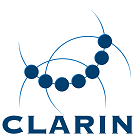Other corpora
CLiPS Stylometry Investigation (CSI) Corpus
The CSI corpus is a yearly expanded corpus of student texts in two genres: essays and reviews. The purpose of this corpus lies primarily in stylometric research, but other applications are possible. There is a vast amount of meta-data available, both on the author (gender, age, sexual orientation, region of origin, personality profile) and on the document (timestamp, genre, veracity, sentiment, grade). The current version of the corpus was assembled in February 2016. Previous versions of the corpus are available from the authors via e-mail request.
CONDIV-corpus
The CONDIV-corpus was specifically designed to study the convergence or divergence (hence the name) between Netherlandic Dutch and Belgian Dutch. It contains a synchronous and a diachronous part. To get access to the data, you need to contact Dirk Speelman at KU Leuven
COREA-coreferentiecorpus
The COREA Coreference Corpus is a corpus of Dutch texts annotated with corerefence relations.
- version 1.0.1 (2014)
- Paper
- Download page
D-Tuna-corpus
The D-TUNA Corpus consists of 2400 written and (transcribed) spoken referential expressions.
- version 1.0 (2009)
- Paper
- Download page
DBRD
The DBRD (pronounced dee-bird) dataset contains over 110k book reviews of which 22k have associated binary sentiment polarity labels. It is intended as a benchmark for sentiment classification in Dutch. The dataset can be used to train a model for sequence modeling, more specifically language modeling and it can be used to train a model for text classification, more specifically sentiment classification, using the provided positive/negative sentiment polarity labels.
deLearyous
The deLearyous dataset is a Dutch (Flemish) dataset for emotion classification following the framework of Leary's Rose, also known as the Interpersonal Circumplex. The dataset contains 11 conversations that were annotated on the sentence level with their position on Leary's Rose, in function of the two defining dimensions: "dominance", and "affinity".
Dutch Idiom Database: Native Speakers (DID-NS)
The DID-NS is a database with appreciations by 390 native speakers of 374 Dutch idiomatic expressions.
- Version 1.0 (2018)
- Methodology
- Download page
NAMES Corpus
The NAMES Corpus is a corpus of Dutch given names and surnames as present in 19th century certificates for birth, marriage and decease. The name variants have been assigned to a standard form.
- Version 1.1 (2020)
- Download page
- Documentation
Personae Corpus
The Personae corpus was collected for experiments in Authorship Attribution and Personality Prediction. It consists of 145 Dutch-language essays, written by 145 different students (BA in Linguistics and Literature at the University of Antwerp, Belgium). Each student also took an online MBTI personality test, allowing personality prediction experiments. The corpus was controlled for topic, register, genre, age, and education level. The original texts, a syntactically annotated version of the texts, and the metadata are available.
JASMIN-BLISS-Negation
A corpus sample of Dutch human-computer dialogues annotated with negation cues.
Multimodal ABEA
Multimodal dataset that can be used in the context of aspect-based sentiment and emotion detection. It consists of 4,900 comments on 175 images from the Adidas Instagram page and is annotated with both aspect and emotion labels.
MFAQ (Multilingual corpus of Frequently Asked Questions)
Parsed from the Common Crawl. The corpus contains 6 million pairs of questions and answers in 21 different languages.
VaccinChatNL
A Belgian Dutch FAQ dataset on the topic of COVID-19 vaccinations in Flanders. It consists of 12,833 user questions divided over 181 answer labels, thus providing large groups of semantically equivalent paraphrases (a many-to-one mapping of user questions to answer labels). VaccinChatNL is the first Dutch many-to-one FAQ dataset of this size.
MQA (Multilingual corpus of Questions and Answers)
Parsed from the Common Crawl. The corpus contains 234 million pairs of questions and answers in 39 languages.
Dutch Audio Description Corpus
The Dutch Audio Description corpus includes the transcribed texts of 39 audio described Dutch films and TV series, in total 154,570 words and 3,074 minutes of video. The data include the corpus files (XML-files) of the transcribed audio descriptions, the multimodal concordancer developed for the project and the raw data extracted from the corpus as part of the PHD project during which this corpus was developed.
Named Entity Recognition CoNLL2002
Spanish and Dutch data with named entity labels. The Dutch data consist of four editions of the Belgian newspaper "De Morgen" of 2000 (June 2, July 1, August 1 and September 1). For the Dutch data, the annotator has followed the MITRE and SAIC guidelines for named entity recognition (Chinchor et al., 1999) as well as possible.
CC-100 Corpus
This corpus is an attempt to recreate the dataset used for training XLM-R. This corpus comprises of monolingual data for 100+ languages and also includes data for romanized languages (indicated by *_rom). This was constructed using the urls and paragraph indices provided by the CC-Net repository by processing January-December 2018 Commoncrawl snapshots. Each file comprises of documents separated by double-newlines and paragraphs within the same document separated by a newline. The data is generated using the open source CC-Net repository. No claims of intellectual property are made on the work of preparation of the corpus. Dutch is one of the languages.
Dutch Gigacorpus
With 234GB of varied plain text, and no fewer than 40 billion tokens, this is in any case one of the largest Dutch corpora. This corpus is also freely available and the quality is relatively high for its size, care has been taken to ensure that the data is as clean as possible. Also, the corpus contains 400 million forum posts in 10 million threads with their timestamp intact for linguistic research.
Corpus Juridisch Nederlands
The Corpus Juridisch Nederlands comprises a collection of 5.856 legal texts that could be consulted from the mid-1980s until 1992 as N-Lex, a database of current Dutch legislation. The material has been made available by the Centre for Informatics and Law of the Erasmus University in Rotterdam.
